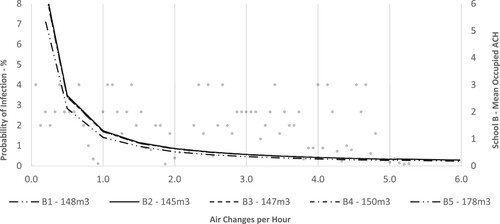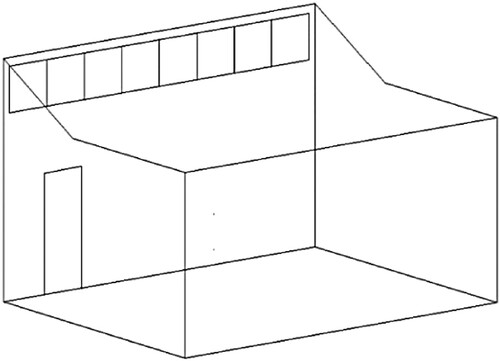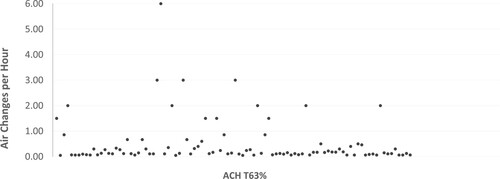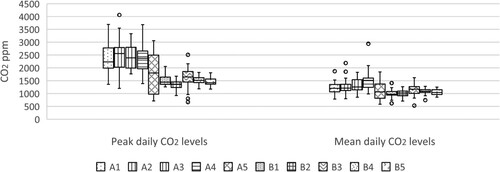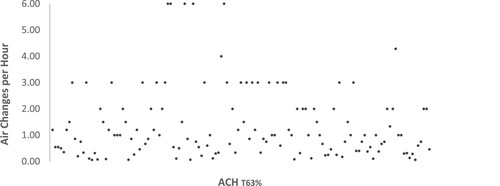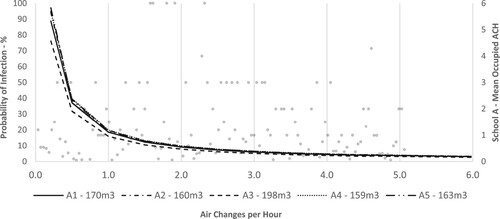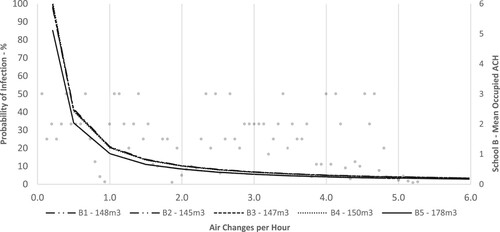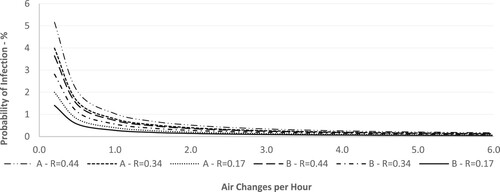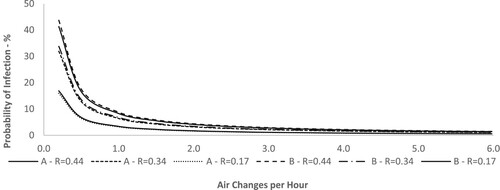Figures & data
Table 1. Classroom sizes and occupancy details.
Table 2. BSA and CO2 generation rate of children.
Table 3. Designed v. Actual ACH.
Table 4. Occupant generated CO2 by class duration.
Figure 9. School A – probability of infection during standard 60-minute class at reduced ACH levels.
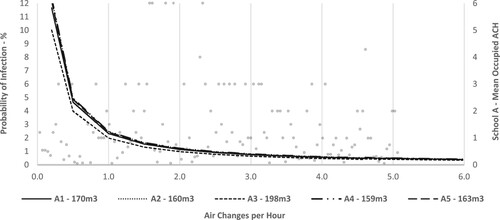
Figure 10. School B – probability of infection during standard 40-minute class at reduced ACH levels.
